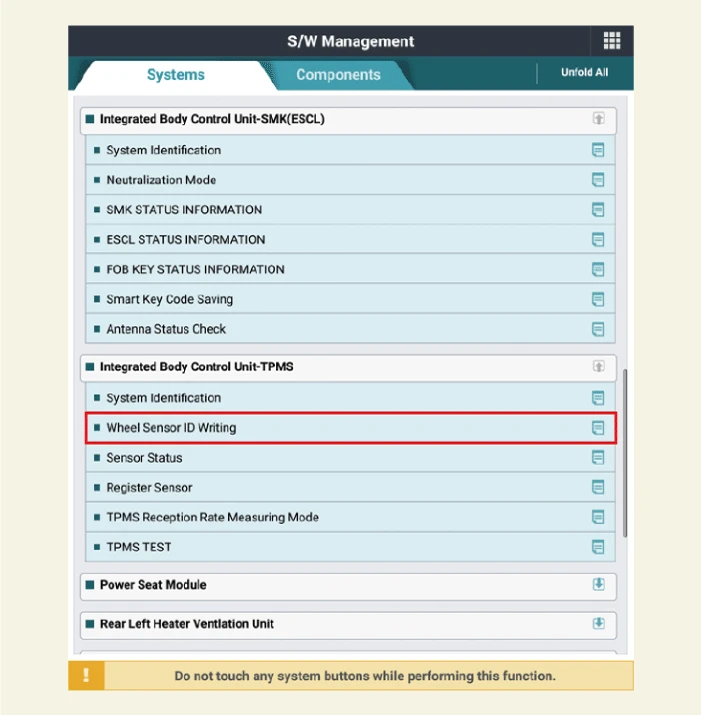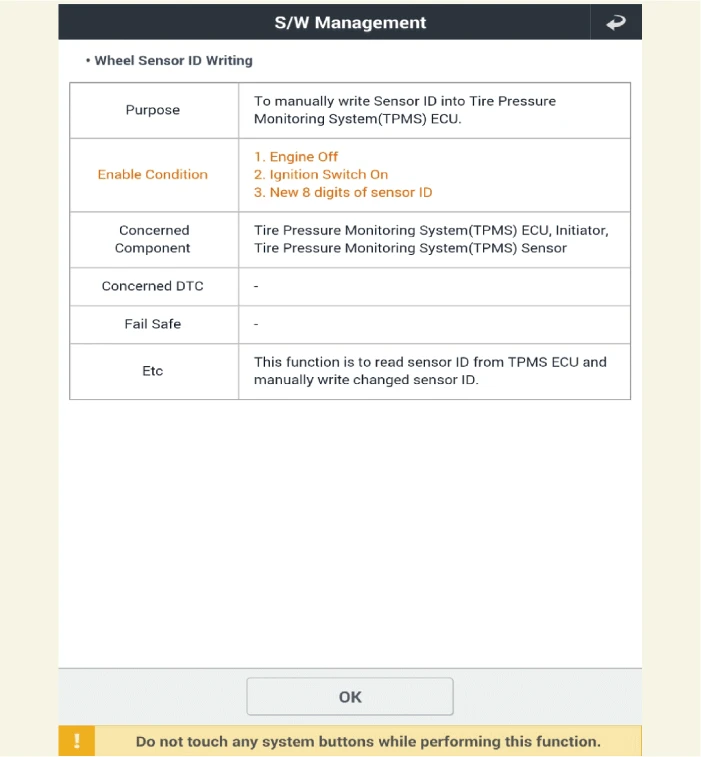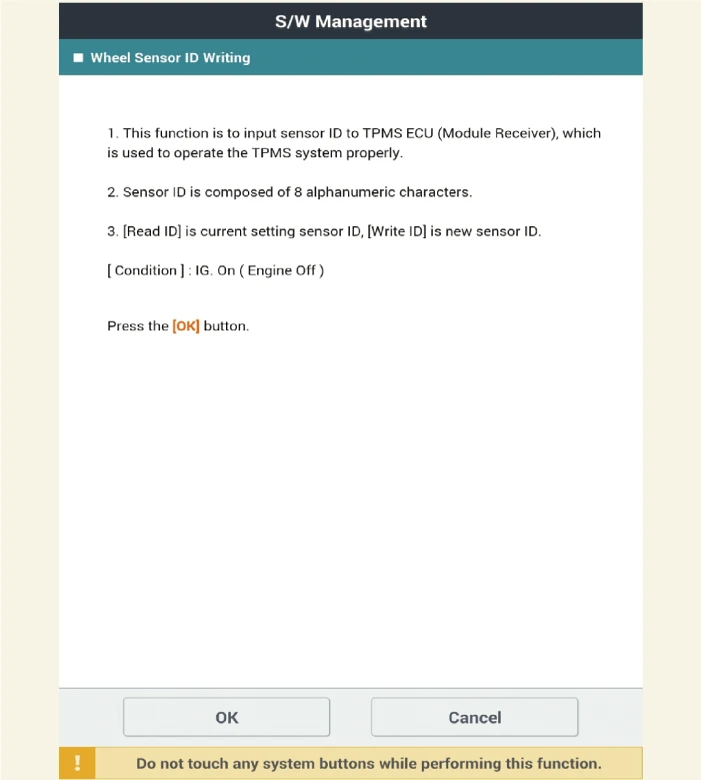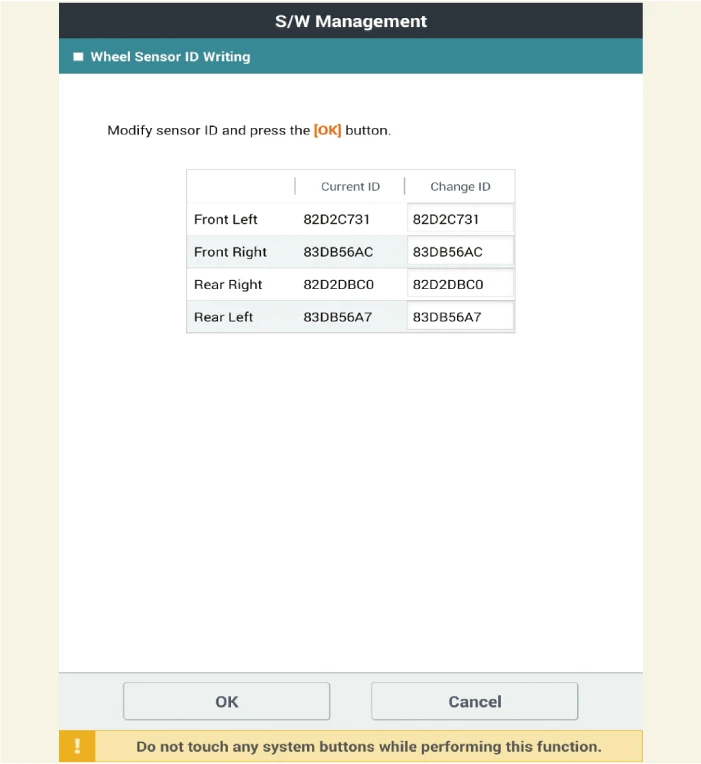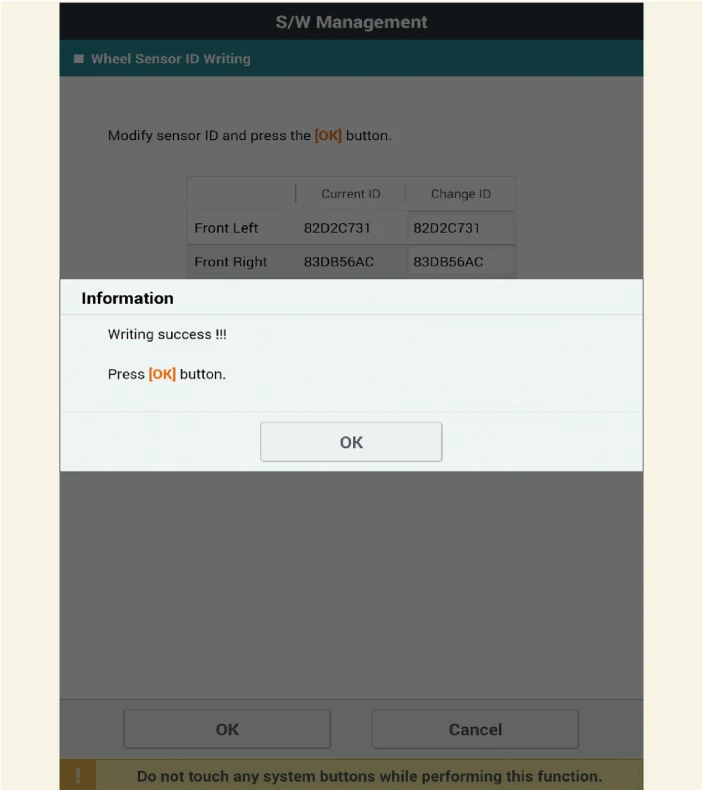Description
TPMS monitors the pressure and temperature of tires to warn of pressure changes that may affect driving conditions.The messages calculated from the processed data are shown in the cluster through one warning lamp.Also, checking the ECU input and output signals by ERROR.And receive pressure data sensored while parking.The ECU processes the data received from the wheel sensors, determines the condition of the tires, and delivers the required warning messages to the driver via the CAN line or hardwire control line.TPMS receiver: IBU (Integrated Body Unit)
1.Initial state
• Platform information and sensor ID are not entered.
2.Normal operation state
• In order to detect tire pressure and DTC, the receiver must be in normal operation.
• The receiver can check the sensor location and data.
Operation
1.General Function
– Auto-learn takes place only once per ignition cycle.
– On successful completion, 4 road wheel sensor ID's are stored into memory for monitoring.
– Until auto-learn completes, previously learned sensors are monitored for under inflation / leak warnings.
2.General Conditions to learn new sensors :
– Receiver must determine that it is confident that sensor is not temporary :a. Uses vehicle speed.b. Uses confidence reduction of previously learned sensors.
– Typical time for continuous driving over 15.5 mph (25 kph) to learn a new sensor is up to 10 minutes.
3.General Conditions to un-learn a sensor that is removed :
– It takes less than 10 minutes at 12.4 - 18.6 mph (20 - 30 kph).
– It depends on the vehicle's speed and the number of sensors input to the receiver.
Inspection
1.Save the vehicle code, VIN, and sensor ID in the receiver and check whether it is properly stored.
2.Check that the status of the TPMS receiver (IBU, Integrated Body Control Unit) is in normal operation.
3.Check whether the TPMS warning light is off and DTC code.
Removal
1.If the TPMS receiver needs to be replaced, replace the Integrated Body control Unit (IBU).(Refer to Body Electrical System - "Integrated Body Control Unit (IBU)")
Installation
1.Install in the reverse order of removal.
2.After replcing the IBU, perform below procedures using KDS.
(1)SMK : Smart Key registration(Refer to Body Electrical System - "Smart Key")
(2)TPMS : Sensor ID registration(Refer to TPMS Sensor - "Adjustment")
Diagnosis With KDS
Wheel Sensor ID Writing
The main contents of diagnostic method using diagnostic device are as follows:1.Connect KDS to data link connector located in the lower of driver side crash pad and then turn the self-diagnosis device after ignition is ON.
2.Select the "IBU-TPMS" and "Wheel Sensor ID Writing" on KDS vehicle selection screen, then select OK.
